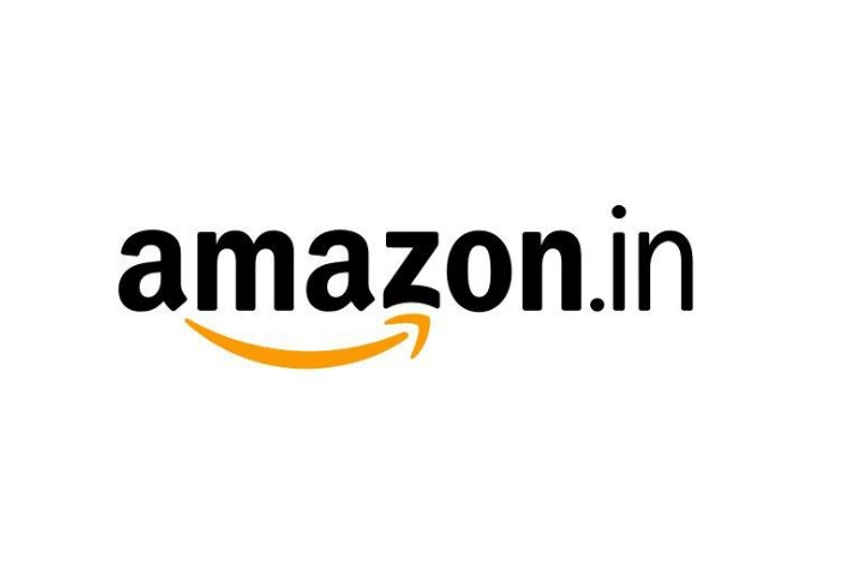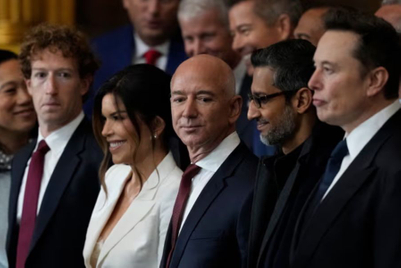The entertainment business has numerous superheroes with a significant fan following. The business world was surely vying for one and today we have one super hero in the name of Amazon. We call this a superhero as we don’t know what business Amazon reflects, is it a search business, an advertising business which delivers quality audience, ecommerce business, a platform of convenience, is it a fashion store, well it is all of it and much more which is nothing but a superhero as we can’t bucket what does Amazon really represents.
We believe that it’s a platform of DISRUTPTION with customer obsession at its heart.
This superhero has a strong battalion in the form of Prime members, which it can unleash on any business it prepares to move into, we can be sure for one thing with Amazon, if it ever enters a business, the incumbent would start losing money, and may be Amazon would never make money but for sure it drives competition crazy, prices for sure are going to go south, and it makes the market place hyper-competitive. In all this pain, the consumers are, for a joyous ride with proliferation of choice. The incumbent if listed, would surely lose market cap and the board room would be filled with discussions of how to manage this volcano. We believe this is truly a SUPER HERO conundrum which most business would face if Amazon ever enters their business
Amazon has grown itself into a giant with a US $232 Billion revenue, but the company is not matured by any sense, with such a huge base its growing 20 per cent and attacking with a mindset of a startup. Jeff has been a phenomenal leader with fanatic passion of delivering value to consumers and his obsession with customers has gone on to create a world of its own. Today, if consumers are enjoying lower prices, convenience, free shipping, faster delivery from competitors also, do credit Amazon for this journey of choice. Amazon spent more on shipping alone this year than Starbucks, another Seattle mainstay, reported in revenue for all of 2018.
Amazon has marveled at disruption which is extremely tough, it has gone on from a logistics company when it started, to a platform of customer obsession with relative ease. Today its products like the Kindle, Firestick, Alexa, and not to count the numerous variety offered on its site is a miracle. This kind of miraculous journey is possible only because of this simple mission but implemented with fanaticism.
"Our vision is to be Earth's most customer-centric company; to build a place where people can come to find and discover anything they might want to buy online."
This brings us to the next question, what is the appropriate valuation for a company like Amazon.
The stock has always defied traditional financial metrics and have always traded in stratospheric valuations. Investors who have held the stock have been rewarded amply, smart investors like Bill Miller have benefited tremendously by holding the stock for years, well that calls for vision and conviction of a different level with an element of luck.
How does the stock look today,should you buy it, has it been fully valued and from here the valuations will compress, returns would be muted on the stock, or will the stock still fire and defy gravity of traditional finance and go on to create its own world of its own with skyrocketing valuations?
We strongly believe that stock price is nothing, but future cash flows discounted at an appropriate discount rate, how much ever these tech companies defy the norm of finance, you won’t be able to pay dividends till you really don’t have cash in your pockets. Jeff Bezos has been clear in his vision even when it came down to the wire on finance.
(The below statement is straight from the 1997 Annual Report -Letter to shareholders)
We believe that a fundamental measure of our success will be the shareholder value we create over the long term. The stronger our market leadership, the more powerful our economic model. Market leadership can translate directly to higher revenue, higher profitability, greater capital velocity, and correspondingly stronger returns on invested capital.
When forced to choose between optimising the appearance of our GAAP accounting and maximising the present value of future cash flows, we’ll take the cash flows.
What better way to start evaluating Amazon, let’s start with the cash flows it has generated over the years.
US $ Million (Source Q4 Earnings – 10 K)
|
Cash Flow for Amazon
|
2016
|
2017
|
2018
|
|
Cash from Operations (CFO)
|
17,203
|
18,365
|
30,723
|
|
Property Plant
|
6,737
|
10,058
|
11,323
|
|
Free Cash Flows
|
10,466
|
8,307
|
19,400
|
A glance at the last three years looks very impressive, from 10 billion to 19 billion in free cash is nothing less than spectacular, the CFO has also grown impressively clearly indicating the robustness of the franchise. We also looked at the commitments under capital leases, as the classification of operating lease and capital lease makes a whole lot of difference, the classification is wonderfully given by Amazon itself as given below.
US $ Million (Source Q4 Earnings – 10 K)
|
Cash Flow for Amazon
|
2016
|
2017
|
2018
|
|
Cash from Operations
|
17,203
|
18,365
|
30,723
|
|
Property Plant
|
6,737
|
10,058
|
11,323
|
|
PPE under capital lease
|
5,704
|
9,637
|
10,615
|
|
Repayments of Lease
|
147
|
200
|
337
|
|
Free Cash Flows
|
4,615
|
(1,530)
|
8,448
|
Now the whole picture turns itself from 4.6 billion to negative 1.5 billion to positive 8.4 billion.
From Amazon's annual report for 2015:
"Our financial focus is on long-term, sustainable growth in free cash flows per share. Free cash flows are driven primarily by increasing operating income and efficiently managing working capital and cash capital expenditures, including our decision to purchase or lease property and equipment."
This is an smart strategy to lease out things but do make sure that when looking at the company at an overall level it’s better to have complete overall picture as traditionally looking at free cash flow may blind a person with an impressive growth and while building valuation models it may overstate making the stock look rock solid , but in reality it may not be .
We went to dig into the balance sheet on the overall debt level of Amazon, the total long-term debt of Amazon is 23495, and with a total asset base of 162648, the overall long-term debt / total assets yields a ratio of 0.14 which is very comfortable.
Now, let’s have a look at the revenue and margins to determine the progress going forward and then finally go about valuing the company.
US $ Million (Source Q4 Earnings – 10 K)
|
Income Statement
|
2016
|
2017
|
2018
|
|
Net Sales
|
135,987
|
177,866
|
232,887
|
|
Total operating expense
|
131,801
|
173,760
|
220,466
|
|
Operating Income
|
4,186
|
4,106
|
12,421
|
|
Operating Margin%
|
3.07
|
2.3
|
5.33
|
|
Net Income
|
2,371
|
3,033
|
10,073
|
The revenue growth has been impressive with a 30 per cent growth over 2017, the overall margins have also doubled from 2017, clearly indicating the story of the stock clearly marrying the numbers. Amazon is no longer an Ecommerce platform hence looking at the overall picture alone would be misleading; hence a greater breakup of the overall picture is warranted for a better understanding of the overall business.
US $ Million (Source Q4 Earnings – 10 K)
|
Net Sales
|
2016
|
2017
|
2018
|
|
North America
|
79,785
|
106,110
|
141,366
|
|
International
|
43,983
|
54,297
|
65,866
|
|
AWS
|
12,219
|
17,459
|
25,655
|
|
Operating Income
|
2016
|
2017
|
2018
|
|
North America
|
2,361
|
2,837
|
7,267
|
|
International
|
(1283)
|
(3062)
|
(2142)
|
|
AWS
|
3,108
|
4,331
|
7,296
|
This breakup makes it evidently clear that most of the growth is AWS and North America, while as international is bleeding and we see that in the near future it will continue to bleed with Walmart buying out Flipkart, the war will intensify and with the governmentt battling the election year has come out with a new ecommerce policy, which will affect Amazon in the near to medium term. Let’s have a deep dwell into the valuation of Amazon as given below.
Please note that as per our fair estimates the value of the stock should be around US$1039, the stock is trading at US$1626 on 4th Feb, over 56 per cent above our estimates of fair value.
The most obvious query to ask, when you do value companies, is what is the year 10 revenue and what is it yielding, well we have projected revenue in excess of US$950 billion, which according to us is also very aggressive, but you will have to give it to Amazon, with this size its growing at 25-30 per cent year on year, hence we went to project 25 per cent growth on its high base and then reduced it to 20 per cent 15 per cent and closed the valuation with a terminal value of 1 per cent on revenue and capex. This again also by no means is lower as Walmart with US$500 billion revenue grows at a snail’s pace of 2 per cent or in a best year at 3 per cent.We have even gone on to increase margins and moved the margins to 11 per cent with due course.
We as valuation teachers believe the stock to be in the overvalued zone, and the stock should eventually drop down by good 50 per cent as per our estimates of value, but be cautioned before you throw the towel in, Amazon has gone to defy gravity very frequently, so it can also in the future.
We have no reason to believe it would drop just because the numbers are terribly overvalued, in our long-lasting experience of the stock market, we have seen numerous stock trade at stratospheric valuations for a long time diverging itself from value. Then What are we sure off? The stock is in that zone from where the returns from this asset would be muted to limited.
“Amazon is not too big to fail,” Bezos said, in a recording of the meeting that CNBC has heard. “In fact, I predict one-day Amazon will fail. Amazon will go bankrupt. If you look at large companies, their lifespans tend to be 30-plus years, not a hundred-plus years.” (Nov, 2018, CNBC)
To sum off and quote David Tepper “There is a time to make money and there is a time to not lose money”. In Amazon any investor moving in today would be relying too much on luck to ride out his returns even in Super Heroes Movies, the protagonist pulls off a miracle very frequently but after the lovely 3D or 4D experience, reality seems very different once you’re out of the theatre in the real world.
(Ramaswamy Ranganathan and Sudarshan Rajan are media professionals who also teach at B-Schools)




.jpg&h=334&w=500&q=100&v=20250320&c=1)
.jpg&h=334&w=500&q=100&v=20250320&c=1)



.jpg&h=334&w=500&q=100&v=20250320&c=1)
.jpg&h=334&w=500&q=100&v=20250320&c=1)


.jpg&h=334&w=500&q=100&v=20250320&c=1)




.jpg&h=268&w=401&q=100&v=20250320&c=1)


.jpg&h=268&w=401&q=100&v=20250320&c=1)
